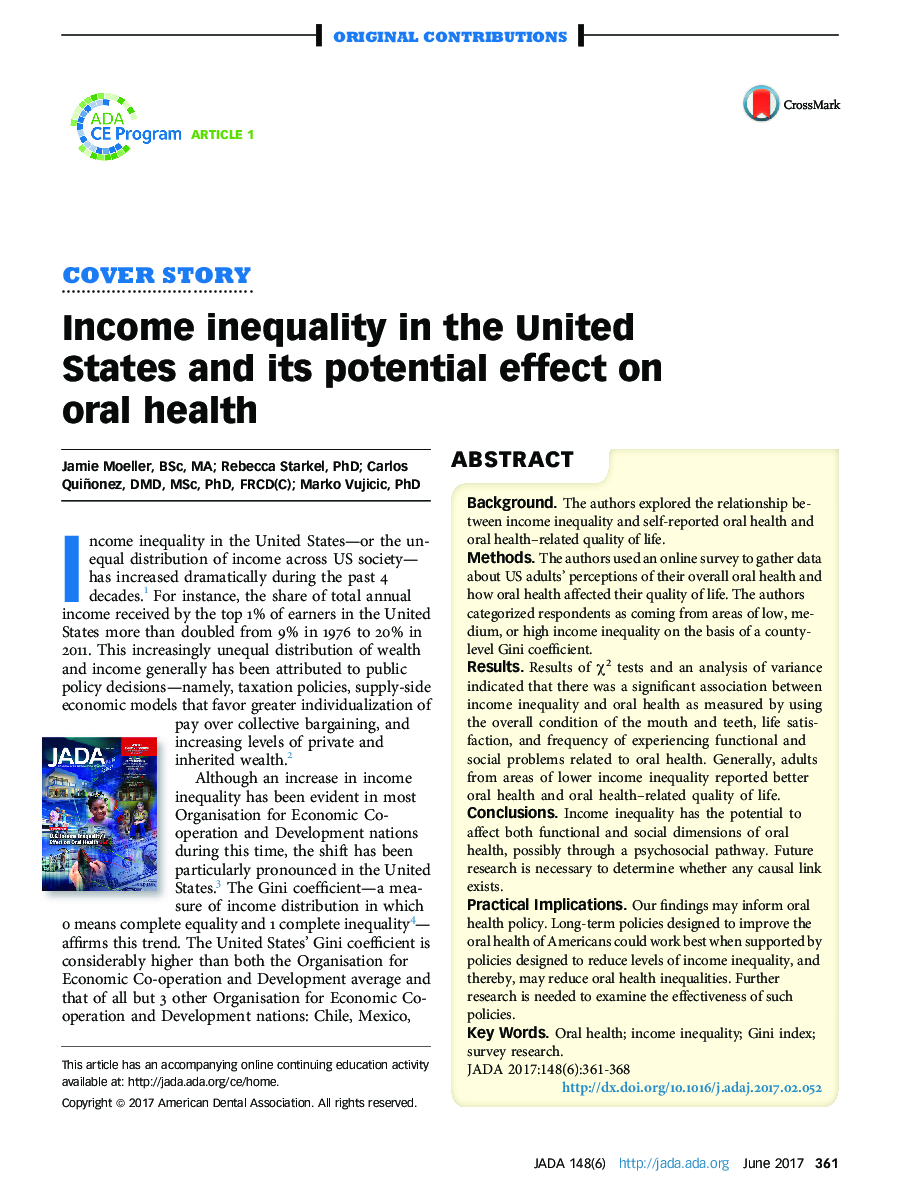| Article ID | Journal | Published Year | Pages | File Type |
|---|---|---|---|---|
| 5639290 | The Journal of the American Dental Association | 2017 | 8 Pages |
BackgroundThe authors explored the relationship between income inequality and self-reported oral health and oral health-related quality of life.MethodsThe authors used an online survey to gather data about US adults' perceptions of their overall oral health and how oral health affected their quality of life. The authors categorized respondents as coming from areas of low, medium, or high income inequality on the basis of a county-level Gini coefficient.ResultsResults of Ï2 tests and an analysis of variance indicated that there was a significant association between income inequality and oral health as measured by using the overall condition of the mouth and teeth, life satisfaction, and frequency of experiencing functional and social problems related to oral health. Generally, adults from areas of lower income inequality reported better oral health and oral health-related quality of life.ConclusionsIncome inequality has the potential to affect both functional and social dimensions of oral health, possibly through a psychosocial pathway. Future research is necessary to determine whether any causal link exists.Practical ImplicationsOur findings may inform oral health policy. Long-term policies designed to improve the oral health of Americans could work best when supported by policies designed to reduce levels of income inequality, and thereby, may reduce oral health inequalities. Further research is needed to examine the effectiveness of such policies.
